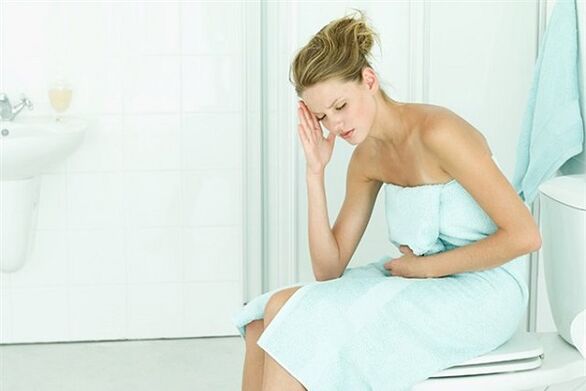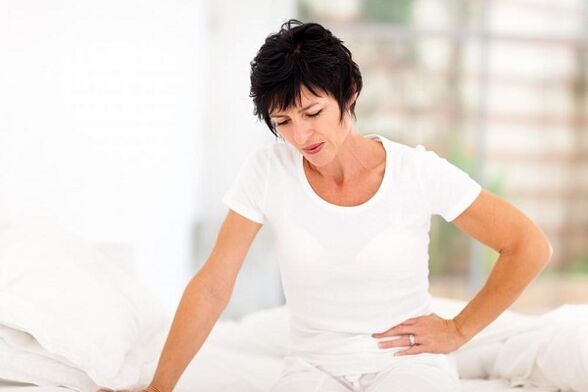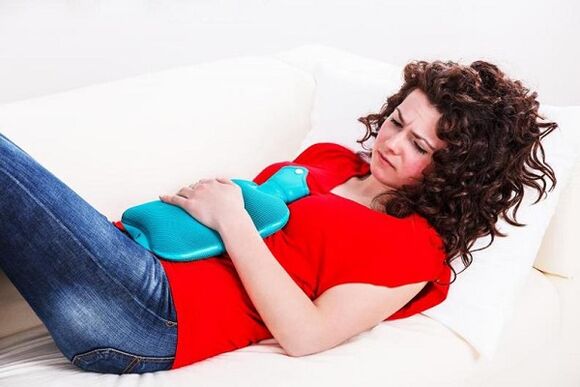Inflammation of the bladder is infectious and causes a number of unpleasant symptoms, among which we can distinguish the stretching pain in the pubis, often but unproductive urination and impurities in the blood in the urine. The bladder in women needs more emptying than in men. The organ is vulnerable to the attacks of viruses and bacteria. Clinical manifestations in each person may differ, it depends on a number of factors: localization of the processes, pathogen, nature of the disease, severity. What leads to the appearance of cystitis, how does it manifest, what threatens and how to fight properly?
Most often, the cause of the disease is the microorganisms, which are the natural inhabitants of our body, for example, this applies to E. coli. The conditionally pathogenic microflora is under the control of immunity, which controls the growth and the number of microorganisms. If failure occurs in the effects of certain factors in the functioning of the immune system, conditionally pathogenic flora can go beyond control and lead to an inflammatory reaction.
Women are vulnerable to cysts for these reasons:
There are several ways to penetrate pathogens in the bladder cavity:
Although most often cystitis occurs against the background of other diseases, in some cases the disease can develop in the form of an isolated process. The reason for this may be the following factors:
More often, cystitis is a complication of such diseases:
Sometimes even taking medicines, more special cytostatics, provokes inflammation of the bladder mucosa. Sometimes even an allergic reaction can serve as a mechanism for triggering inflammation.
At the very beginning of the disease, the first sign of cystitis in women is a change in the color of urine. It acquires a specific odor and is cloudy. Urination calls are also becoming more and more frequent. The urination process itself is accompanied by unpleasant sensations: discomfort or burning. The temperature may rise, but this is not a must.
In one way, at the first signs of cystitis, a woman should worry and get involved in the treatment of the disease.
Depending on the nature of the course of inflammation, the disease can be of two types:
Cystitis differs in the occurrence of morphological changes:
Depending on the etiological factor, the disease is bacterial, viral, fungal, not bacterial. The following bacteria can cause cystitis:
Not bacterial cystitis, in turn, is divided into:
Most often cystitis in women begins abruptly and suddenly with the appearance of such signs:
Cystic complications include:
Usually, the urine has a light yellow color. Hematuria can cause a decrease in the tone of the muscle tissue of the bladder, a disorder of blood circulation, or inability to empty the bladder for a long period of time. According to statistics, cystic in 60% of cases goes into chronic form. The main mistake is tightening! The earlier the treatment of cyst begins, the better.
The presence of hematuria may indicate the development of forms of cystitis that pose a threat to the patient's life:
Cystitis with blood is accompanied by the onset of such symptoms:
There are several types of hematuria:
As much as it may be, the appearance of blood in the urine is a symptom showing the presence of a serious disorder, so it is extremely important to consult a specialist. Hematuria is dangerous for the appearance of such complications:
The diagnosis is based on clinical and laboratory data, as well as echoscopy and endoscopy. The Supnele palpator examination is extremely painful.
In general urine analysis, an increased content of red blood cells and leukocytes has been found, there is protein, mucus, bacteria. Bacteriological sowing of urine is characterized by abundant growth of pathogens.
Be sure to have an ulcers of the bladder. Cystoscopy allows you to identify the morphological form of organ damage as well as to identify calculas. Foreign bodies and neoplasms.
Cystitis requires an integrated approach to its treatment. When taking tablets, unpleasant symptoms can pass in a few days, but the infection can also hide at the right time "show your teeth".
Taking cystitis pills should be combined with diet. The essence of the diet is to create gentle conditions for the patient. Do not irritate the inflamed mucosa of the bladder with sharp, salty, marinated food and especially alcohol.
But the drinking fluid should be as much as possible. In this way, you contribute to the excretion of pathogenic microflora and make urine, which will be less irritated by the inflammation organ.
The basic principles of cyst treatment in women include the following:
You can forget about cystics using such drug groups:
The doctor deals with the selection of the antibiotic after receiving data on bacteriological sowing of urine and identifying the sensitivity to the drug. It is important to undergo antibiotic therapy until the end, otherwise the disease may be repeated after a while.
The healing effect of medicinal herbs is difficult to overestimate. If the older women have collected, dried and insisted herbs, then in our time there is no urgent need for this, because herbal preparations with ready herbal are sold in pharmacies.
Phytotherapy is not monosmetic, but is used in combination with antimicrobial agents. They enhance the therapeutic effect of antibiotics and also reduce the risk of side effects.
Sometimes a doctor's visit is not possible in the near future. These are exceptional cases, in all other cases where the first symptoms occur, it is important to consult a specialist.
At home, you can cure cystitis in mild form, provided that the disease is not accompanied by pain and hematuria. But even in this case, it is important to take the exam and consult a urologist.
It is extremely important for women to monitor the bed rest. The female body should not be overworked, it must have the strength to fight the disease.
Non -traditional recipes allow you to cure cystitis without harming their health. They are used in addition to the basic drug therapy and are used with the consent of the doctor. Among the folk recipes of cystics in women are the most common:
Simple recommendations below will help prevent the onset of the disease:
Cystitis in women is a seriously infectious and inflammatory disease that provides enormous discomfort. The disease impairs the quality of life and injures. Cystitis threatens serious complications, sometimes even a danger to the patient's life. An unexplored disease leads to the spread of the infectious process and the transition of pathology to chronic form.
The diagnosis is the first stage of the therapeutic process for cystitis in women. Self -diagnosis can lead to a false path, so you will lose valuable time. Cystitis treatment deals with a urologist. It includes drug therapy, folk treatment and diet. Follow all medical recommendations, do not forget about prevention and be healthy!
























